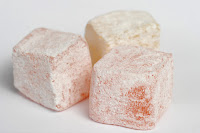Well, I tried to get creative.
So, having wanted to make pulled turkey sandwiches for a little while now, I decided to go ahead and rock this with a homemade barbecue sauce. Onto the recipe!
4 garlic cloves, minced
1 cup tomato ketchup
1/2 cup sugar (or sugar substitute would work too)
1/4 cup yellow mustard
1/4 cup dijon mustard
2 tablespoons vinegar
2 tablespoons Worcestershire sauce
1 tablespoon chili powder
1/2 teaspoon onion salt
Fresh cracked black pepper to taste
Hot sauce (like tabasco) to taste
1/2 cup Lapsang Souchong (1 tbsp Lapsang Souchong leaves & 4oz water)
1. Prepare tea using 4oz boiling water to 1 tbsp leaves and let steep for 2-3 minutes. Set aside.
2. In a saucepan over medium heat, combine all but tea.
3. Bring to boil and simmer for about 5 minutes.
4. Remove from heat and stir in tea.
Seriously. That's it. Quick and easy and really tasty. The smoky flavor imparted by the tea is far more subtle than liquid smoke, in a really good way. It has a richer flavor and adds a depth to this that I appreciated.
 |
| Posing in the crockpot with onions |
So next time you want to make something that needs barbecue sauce, try making your own! My apartment smells amazing and I'm really happy how this turned out!
Happy sipping!












